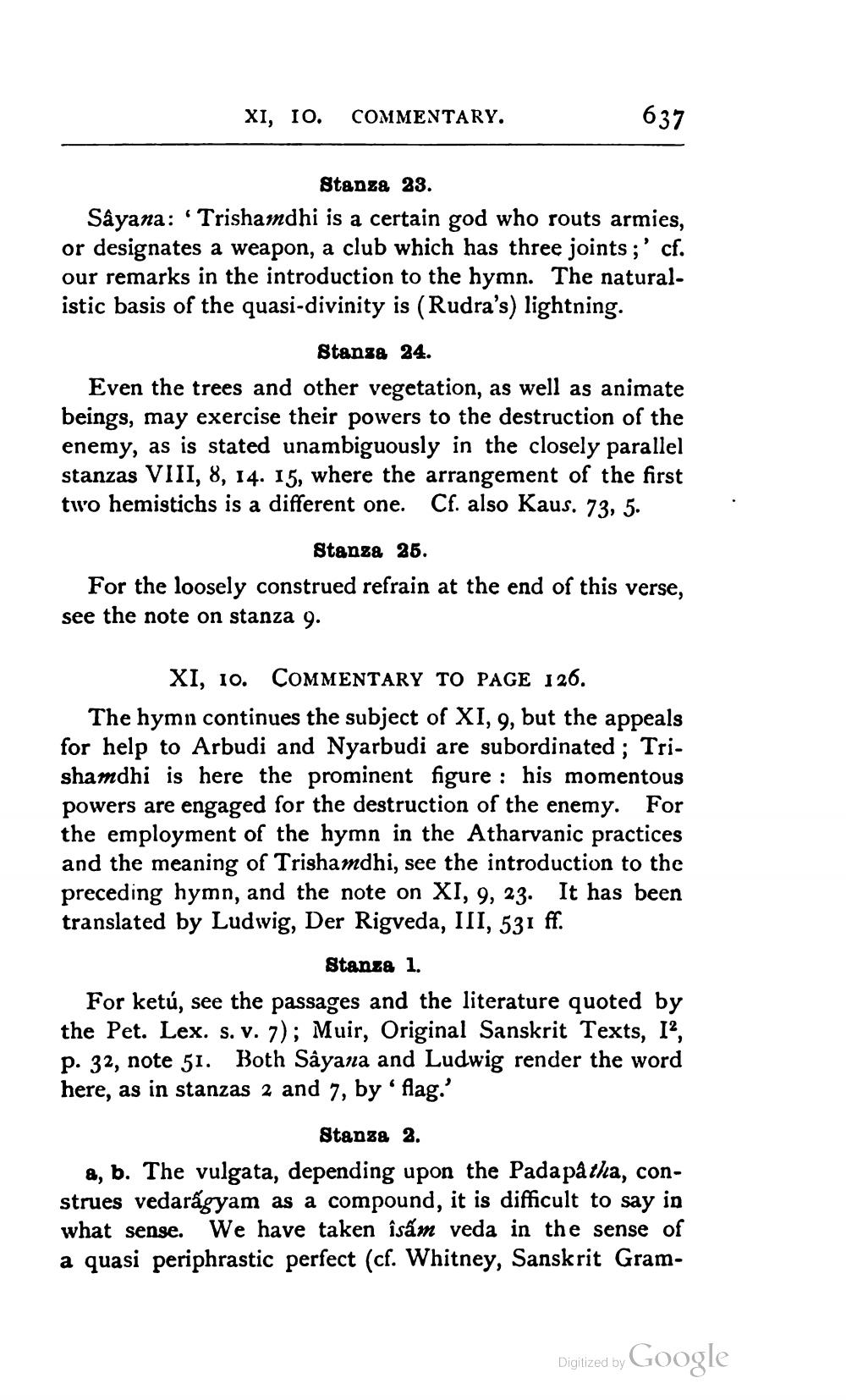________________
XI, 10. COMMENTARY.
637
Stanza 23. Sâyana: 'Trishamdhi is a certain god who routs armies, or designates a weapon, a club which has three joints;' cf. our remarks in the introduction to the hymn. The natural. istic basis of the quasi-divinity is (Rudra's) lightning.
Stanza 24. Even the trees and other vegetation, as well as animate beings, may exercise their powers to the destruction of the enemy, as is stated unambiguously in the closely parallel stanzas VIII, 8, 14. 15, where the arrangement of the first two hemistichs is a different one. Cf. also Kaus. 73, 5.
Stanza 25. For the loosely construed refrain at the end of this verse, see the note on stanza 9.
XI, 10. COMMENTARY TO PAGE 126. The hymn continues the subject of XI, 9, but the appeals for help to Arbudi and Nyarbudi are subordinated ; Tri. shamdhi is here the prominent figure : his momentous powers are engaged for the destruction of the enemy. For the employment of the hymn in the Atharvanic practices and the meaning of Trishamdhi, see the introduction to the preceding hymn, and the note on XI, 9, 23. It has been translated by Ludwig, Der Rigveda, III, 531 ff.
Stanza 1. For ketú, see the passages and the literature quoted by the Pet. Lex. s. v. 7); Muir, Original Sanskrit Texts, 12, p. 32, note 51. Both Sâyana and Ludwig render the word here, as in stanzas 2 and 7, by 'flag.'
Stanza 2. a, b. The vulgata, depending upon the Padapa tha, construes vedarágyam as a compound, it is difficult to say in what sense. We have taken îsám veda in the sense of a quasi periphrastic perfect (cf. Whitney, Sanskrit Gram
Digized by Google




